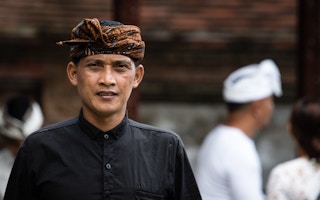From combating poverty with batik shirts to encouraging energy efficiency at the library, cities should use their cultural assets more to help deliver on global development goals, advocates say.
Cities are playing an increasingly important role in implementing global development goals on combating poverty, inequality and climate change, adopted by United Nations member states three years ago to guide national policies through 2030.
In an eight-day meeting that began on Monday at UN headquarters in New York, 47 countries will review their progress towards six of the 17 SDGs, including one that calls for inclusive, sustainable cities.
“Culture is for a city very much related to heritage … creativity (and) diversity,” said Jordi Pascual, an expert on cultural policies and sustainable development United Cities and Local Governments (UCLG), a network of cities.
“
The culture sector and voluntary sector act as bonding cement—bonding the city together and affecting people’s health, participation and sense of cohesion.
Magnus Metz, Malmo Culture Department
City governments need to analyse how to use these three elements and include them in policies to help countries achieve the SDGs, Pascual told the Thomson Reuters Foundation.
With over half of the world’s population living in cities, a figure expected to rise to 70 per cent by 2050, backers of the SDGs view local action as critical.
Many of the actions required to achieve the SDGS, such as planning, the provision of housing, infrastructure and basic services, are the responsibility of local governments.
The mayors of Barcelona, Berlin, Libreville, Madrid, Montevideo and Montreal will be among the local leaders at the UN meeting to discuss the role of cities in delivering on the SDGs.
A UCLG report published in June cites a wide range of cultural policies and industries that can help cities deliver on the SDGs.
City leaders in Pekalongan, Indonesia have branded their community as the “city of batik”, supplying 60 per cent of the country’s stock of Indonesia’s famous colorful shirt.
They employ a majority-woman workforce in the process, which helps contribute towards the global goal to end poverty.
In Britain, libraries in Croydon and Derby lend energy monitors to help patrons measure the energy efficiency of their appliances, which helps contribute towards the global goal to secure affordable and clean energy.
Santa Fe, Argentina’s eighth-largest city, is investing heavily in a strategy to become a design hub and showcased its homegrown talent at Barcelona Design Week in June, the only municipality to send a delegation to the global design event.
“We work with culture as a transversal dimension in all areas of government,” Santa Fe culture secretary Patricia Pieragostini told the Thomson Reuters Foundation.
Civic leaders in the Swedish city of Malmo have publicly committed to “localising” the SDGs and see access to culture as a key element in the Swedish city’s sustainable development.
“The culture sector and voluntary sector act as bonding cement—bonding the city together and affecting people’s health, participation and sense of cohesion,” said Malmo Culture Department’s Magnus Metz via e-mail.
This story was published with permission from Thomson Reuters Foundation Places.










